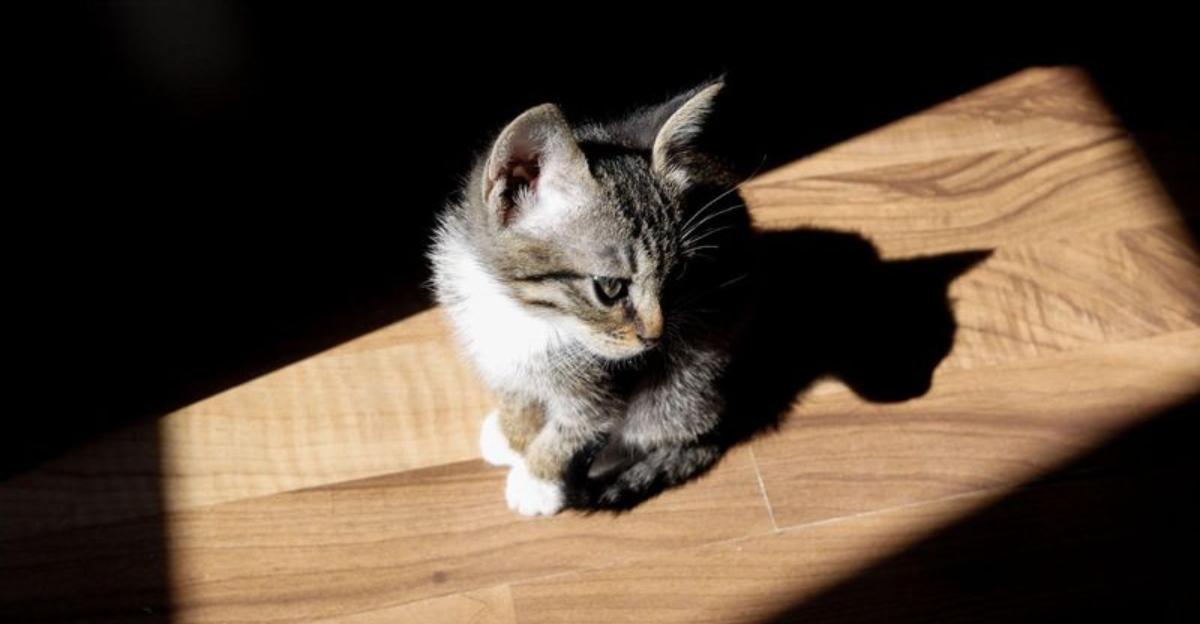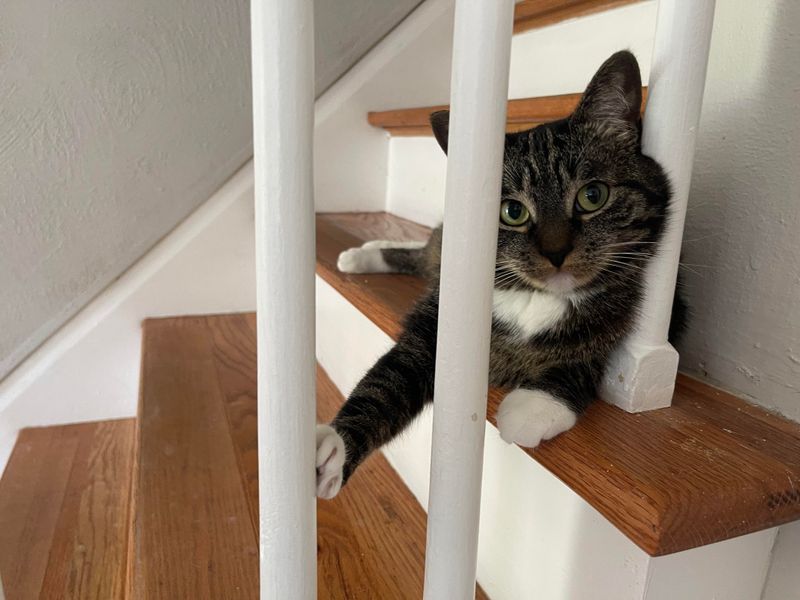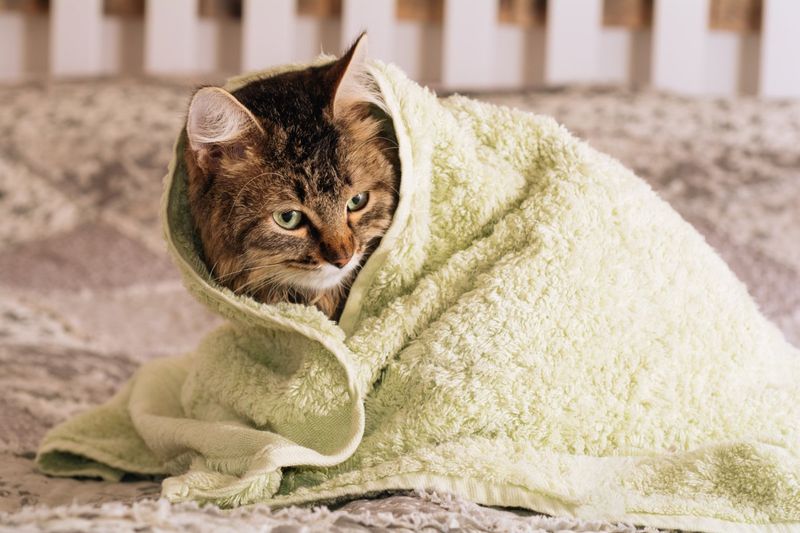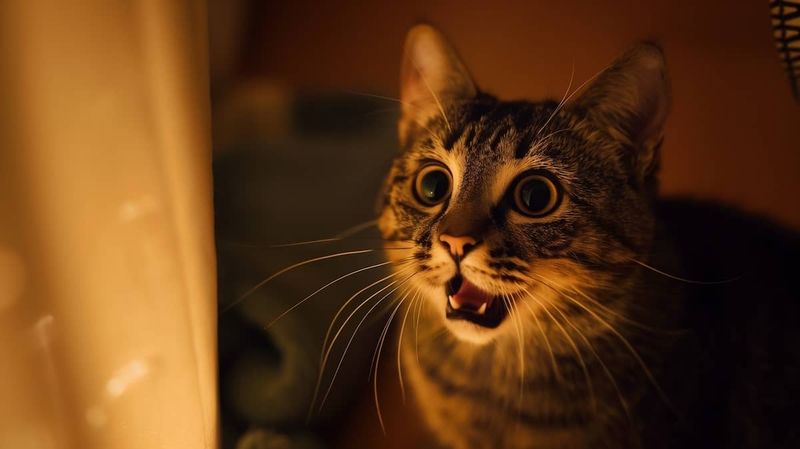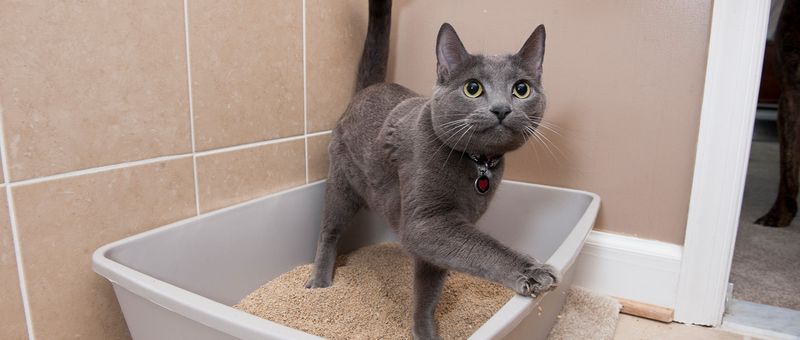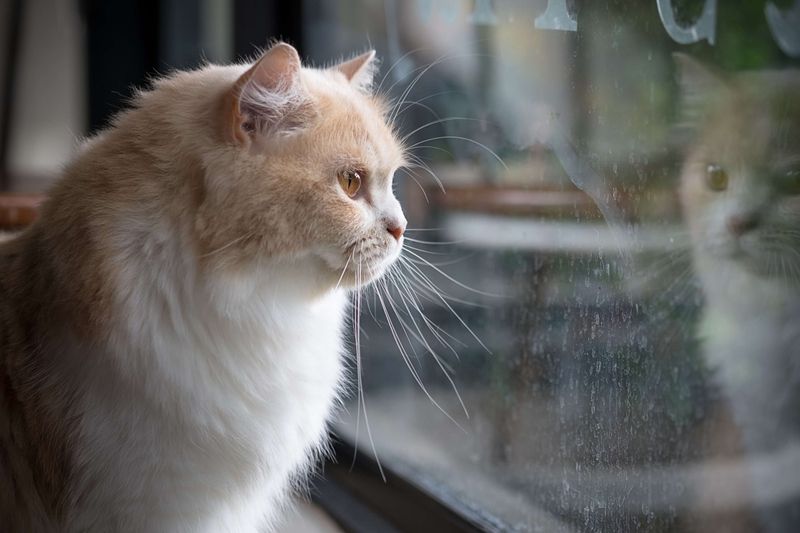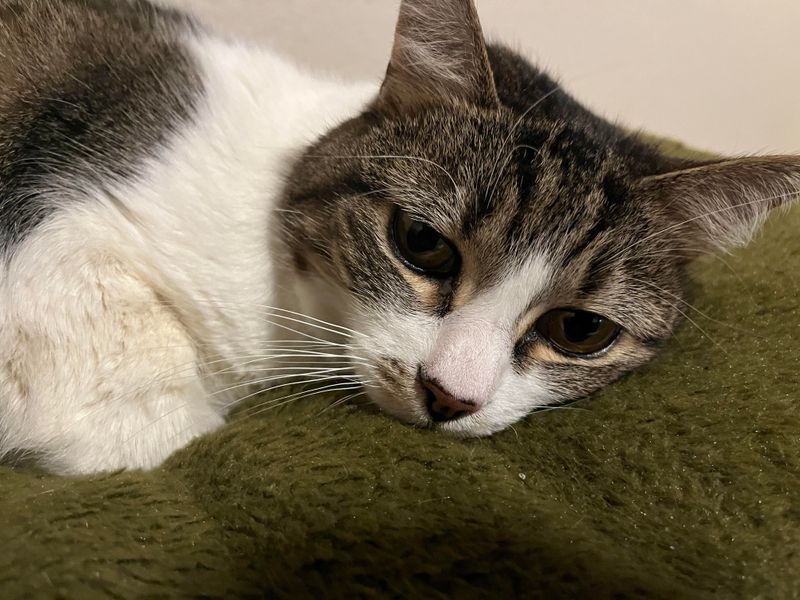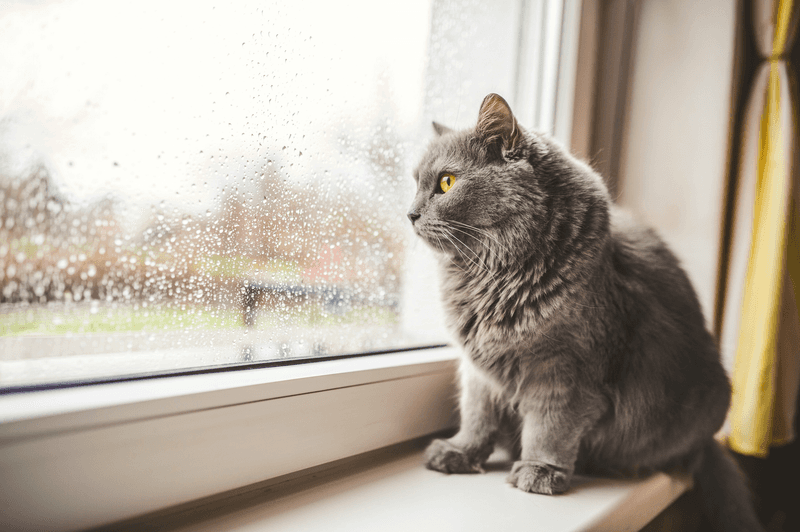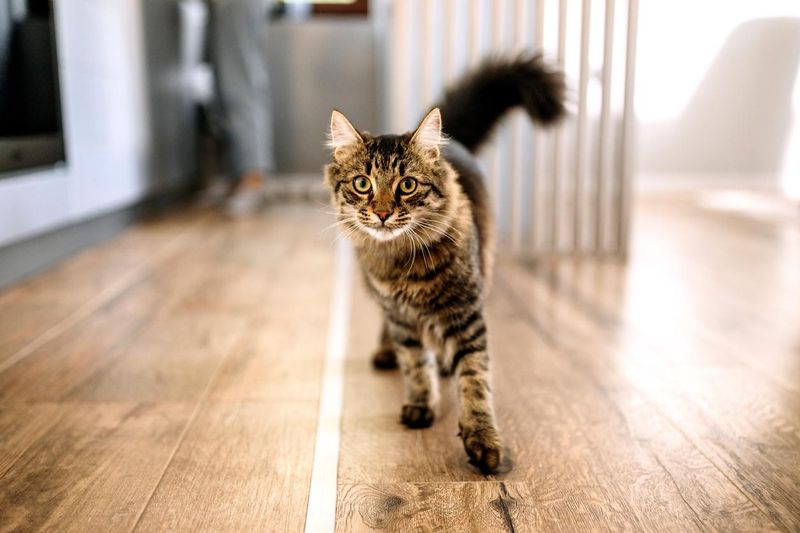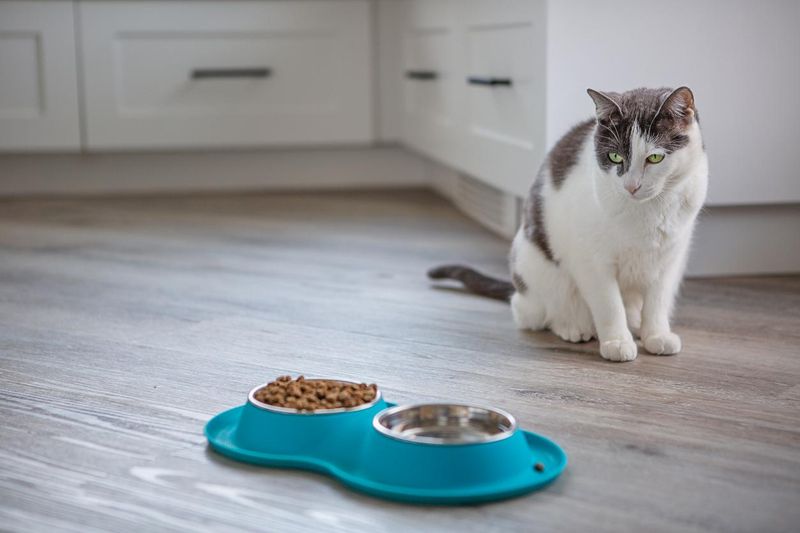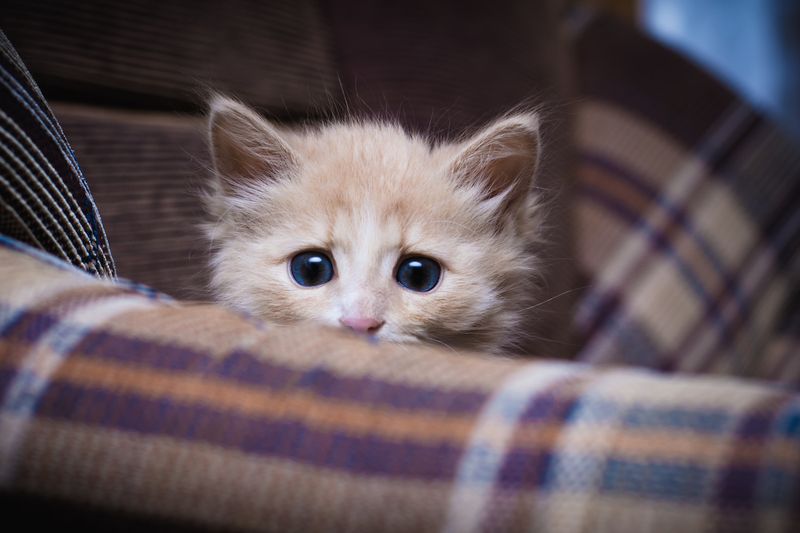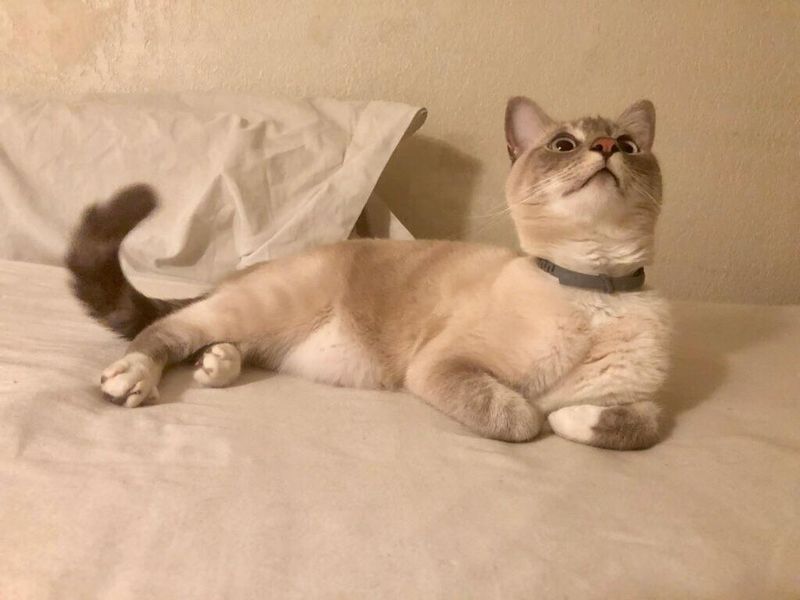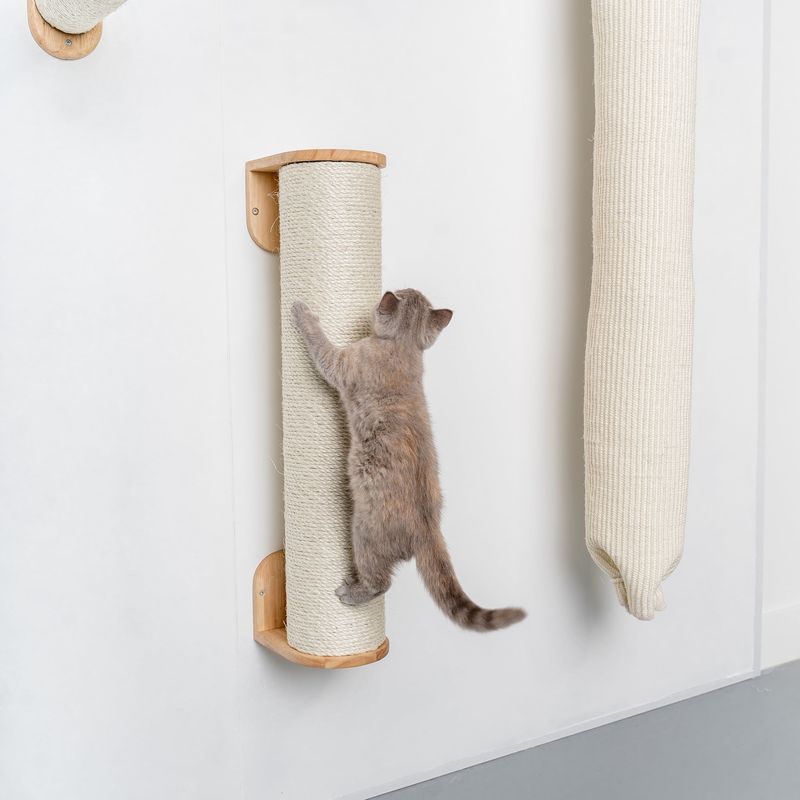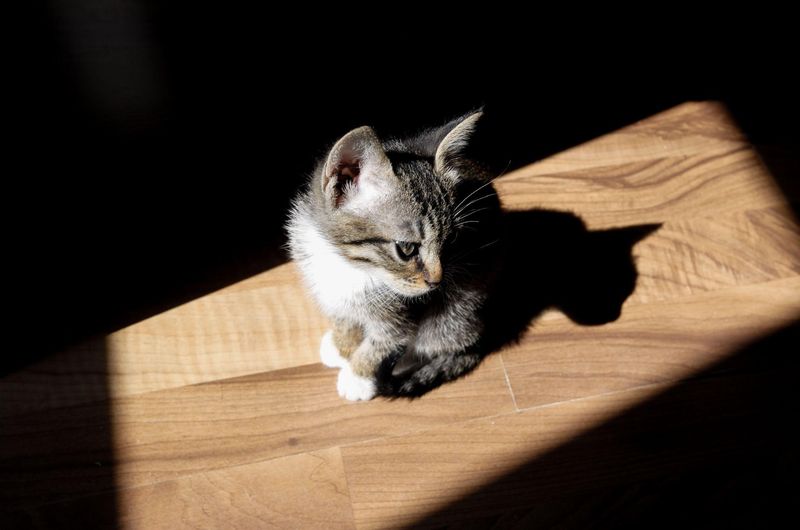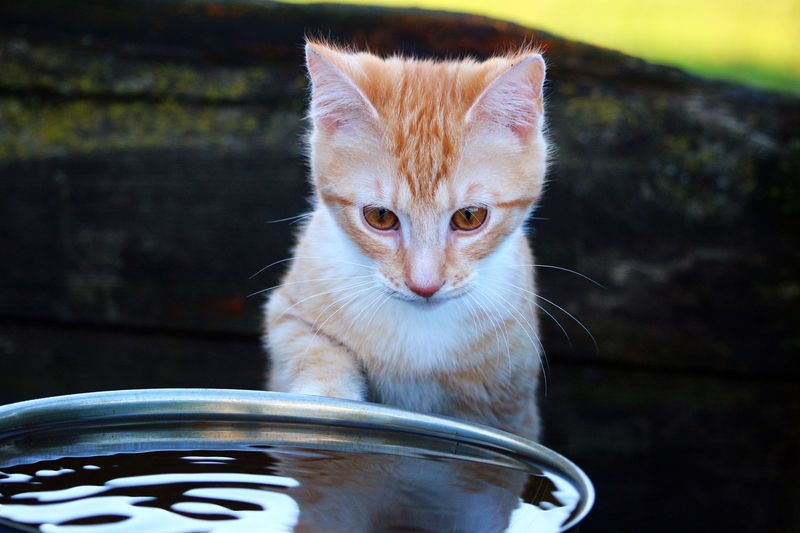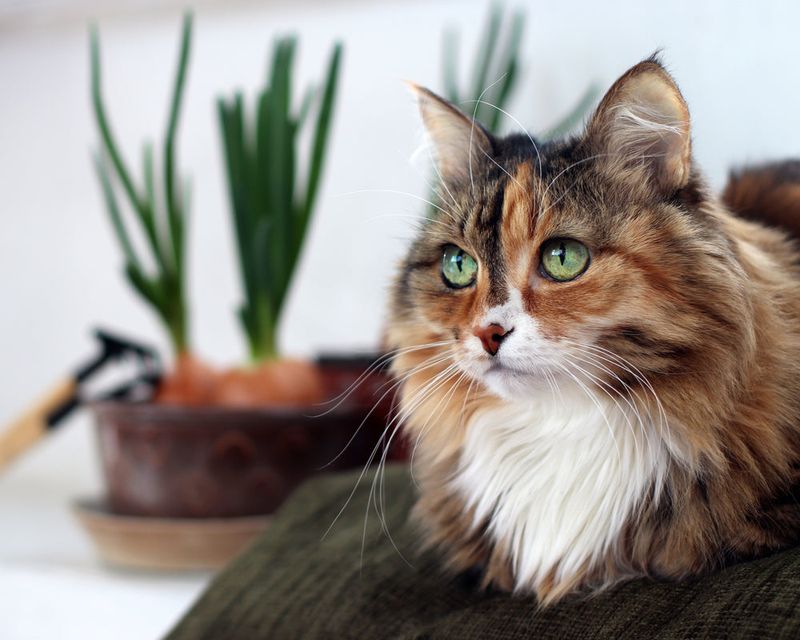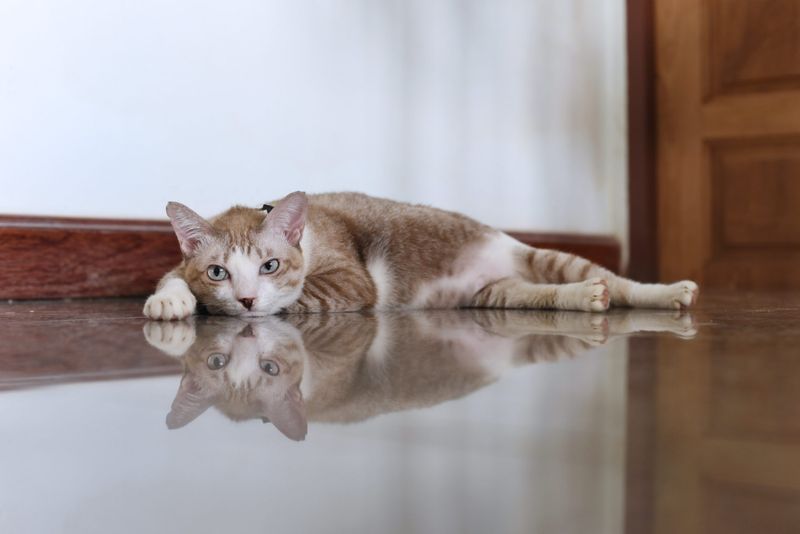📖 Table of Content:
- 1. Disorientation
- 2. Changes in Sleep Patterns
- 3. Increased Vocalization
- 4. Litter Box Issues
- 5. Decreased Interest in Play
- 6. Grooming Neglect
- 7. Avoidance of Social Interaction
- 8. Repetitive Behaviors
- 9. Loss of Appetite
- 10. Anxiety or Restlessness
- 11. Ceiling Staring Episodes
- 12. Unexpected Wall Climbing
- 13. Fascination With Shadows
- 14. Sudden Fear of Water
- 15. Forgetting Familiar Places or People
- 16. Difficulty Navigating Obstacles or Finding Food
As cats grow older, they may begin showing behaviors that suggest cognitive decline, which can resemble dementia in humans. These changes can be subtle at first, but over time, they can significantly affect a cat’s well-being and behavior. Recognizing the early warning signs is crucial for offering proper care and support.
Cats with dementia may exhibit shifts in their usual patterns, becoming forgetful or disoriented in familiar environments. Understanding these signs can help in managing the condition and improving the quality of life for affected cats. With prompt attention, it’s possible to adjust their routine to keep them comfortable and safe.
Cognitive decline in cats often goes unnoticed, as symptoms can be mistaken for normal aging. However, by being observant and aware of the specific signs of dementia, cat owners can make informed decisions about their pet’s care. Identifying the symptoms early is essential for providing the best possible support.
1. Disorientation
Cats with dementia may often appear confused or disoriented in their surroundings. Your feline friend might wander aimlessly around the house, seemingly unsure of where they are or how they got there. This behavior can be distressing to observe.
They might also get stuck in corners or behind furniture, unable to navigate their way out. If your cat is staring blankly at walls or getting lost in familiar places, it might be a sign of cognitive decline.
Providing a predictable environment and keeping furniture placement consistent can help minimize confusion.
2. Changes in Sleep Patterns
A noticeable shift in your cat’s sleep patterns could indicate dementia. Cats with cognitive issues might sleep more during the day and stay awake at night.
This change can be unsettling for both you and your pet, as nighttime restlessness can lead to increased vocalizations or wandering.
To help manage these disruptions, try to engage your cat in playful activities during the day to encourage nighttime sleep. Maintaining a consistent routine can also aid in regulating their sleep cycle.
3. Increased Vocalization
If your cat has started meowing more often, especially at night, it could be a sign of dementia. This increased vocalization may be due to confusion or anxiety, which often accompany cognitive decline.
The loud and persistent meowing can be disruptive and may indicate that your cat is trying to communicate discomfort or disorientation.
Providing comfort with soothing tones and ensuring their environment is secure can help ease their anxiety. Consider consulting with a veterinarian for further advice.
4. Litter Box Issues
Problems with using the litter box might be one of the more apparent signs of dementia in cats. Your cat may forget where the litter box is located or not recognize it as such.
Accidents outside the box can become frequent, causing stress for both the cat and the owner. These issues often stem from confusion or memory lapses.
To help, ensure the litter box is easily accessible and located in a quiet, familiar spot. Regular cleaning and a consistent routine can also aid in managing this behavior.
5. Decreased Interest in Play
A decline in playfulness can be a sign of cognitive decline. If your once playful cat is showing a lack of interest in toys or activities they previously enjoyed, dementia might be a factor.
This change can be due to confusion, anxiety, or a decrease in physical abilities. Engaging your cat in gentle play and providing stimulating toys can help maintain their mental engagement.
Regularly introducing new activities that suit their abilities and preferences can also encourage interaction and activity.
6. Grooming Neglect
Cats are known for their grooming habits, so a decrease in self-care can be alarming. If your cat’s coat is looking matted or unkempt, it might be an indication of dementia.
This neglect could stem from forgetfulness, confusion, or a lack of interest in maintaining hygiene. It’s essential to assist with grooming to avoid skin issues or discomfort.
Regular brushing and gentle grooming sessions can help, and if the problem persists, consulting with a vet is advisable to rule out other health concerns.
7. Avoidance of Social Interaction
As dementia progresses, a cat might avoid socializing with people it once enjoyed being around. This behavior often shows up as more hiding or a refusal to engage in activities such as being petted or snuggled.
Such behavior change may be due to anxiety, confusion, or fear. Encouraging gentle interactions and providing a safe, quiet space can help your cat feel more secure.
Monitoring their behavior and consulting with a veterinarian can provide additional support and guidance in managing these changes.
8. Repetitive Behaviors
Pacing or over-grooming repeatedly can be indicators of cognitive decline in cats. If these actions increase, they could point to dementia as an underlying cause.
These behaviors can be self-soothing or a response to anxiety. Observing these patterns and understanding their triggers can assist in managing them.
Providing engaging activities and reducing stressors in their environment can help alleviate these behaviors. Consulting with a veterinarian for customized strategies might also be beneficial.
9. Loss of Appetite
A sudden decrease in appetite can be concerning and might be linked to dementia. If your cat is ignoring meals or showing disinterest in food, cognitive issues could be a factor.
This change might be due to confusion or a reduced ability to recognize hunger signals. Ensuring that meals are appealing and offered in a quiet, comfortable setting can help.
Monitoring their weight and providing nutrient-rich diets can support their health. Veterinary advice is crucial if appetite loss persists.
10. Anxiety or Restlessness
Anxiety is one of the common symptoms of dementia in cats, often manifesting as excessive vocalization, restlessness, or agitation. Cats with dementia may become easily disoriented, particularly in familiar surroundings, causing them to feel uneasy or frightened.
They might also display behaviors such as hiding, pacing, or becoming more clingy with their owners, seeking constant reassurance. In some cases, the anxiety may intensify at night, leading to disrupted sleep patterns or more vocal outbursts.
As the dementia progresses, these signs of anxiety may become more pronounced, with the cat seeming unable to settle or find comfort.
11. Ceiling Staring Episodes
It’s not uncommon for cats to gaze at seemingly nothing, but prolonged staring at the ceiling could be more than curiosity. If your feline friend spends extended periods fixating on the ceiling, it might be an unusual sign of cognitive decline.
This behavior can appear random and without a trigger. While it might seem amusing, it could indicate your cat is experiencing confusion or disorientation.
Observing this behavior frequently? Consider discussing it with your vet, as it might be a sign of dementia. Keeping a log of such episodes can help in assessing the situation accurately.
12. Unexpected Wall Climbing
Cats are natural climbers, but a sudden fixation on climbing walls without visible prey or toys might raise eyebrows. This odd behavior could be a sign of cognitive changes.
If your cat starts attempting to scale smooth indoor walls, it might be experiencing a form of disorientation or confusion. Such behavior lacks a clear purpose and is different from playful antics.
While this can be entertaining to watch, it’s crucial to monitor if it becomes a regular pattern. Consulting with a veterinarian can provide insights into whether this signals dementia or another health issue.
13. Fascination With Shadows
While many cats enjoy chasing shadows, an unusual obsession with them might suggest cognitive changes. If your cat spends excessive time fascinated by shadows, it might be signaling something more.
This fascination could be an innocent game or a sign of disorientation. Observe if the behavior appears compulsive or without context.
Regularly document such instances and consider consulting your vet. Shadows can be a source of entertainment, but when they become an all-consuming interest, understanding the underlying cause is essential for your cat’s well-being.
14. Sudden Fear of Water
While cats are usually uninterested in water except during bath time, a sudden fear of it can signal cognitive changes. If your cat begins to act anxious around its water bowl or fountain, it could be a sign of confusion.
This newfound fear can manifest as avoidance or distress during regular interactions with water sources. While it might seem trivial, it’s important to recognize it as a potential sign of dementia.
Keeping track of such reactions and discussing them with your vet can be helpful. Understanding these changes ensures your cat remains comfortable and supported.
15. Forgetting Familiar Places or People
Senior cats with dementia often stare blankly at their owners as if meeting strangers. Your once-affectionate companion might suddenly hiss when approached or hide from family members they’ve known for years.
Beloved spots like favorite windowsills or sleeping areas may suddenly become unfamiliar territory. You might notice your cat getting trapped in corners or meowing loudly in rooms they’ve lived in for years, seeming lost in their own home.
These memory lapses typically worsen at night, a phenomenon called ‘sundowning.’ Your cat might pace, vocalize excessively, or seem especially confused after dark – signs their cognitive map is failing.
16. Difficulty Navigating Obstacles or Finding Food
As cognitive function diminishes, cats can lose their spatial awareness—often walking into furniture or hesitating before making jumps they once performed effortlessly.
Food bowls become mysterious objects to dementia-affected cats. Your pet might circle their dish repeatedly, forgetting why they approached it or how to eat from it. Some cats stand directly over their water bowl but cry out thirstily, unable to connect their need with the solution right beneath them.
Watch for unusual bathroom behaviors too. A previously perfect litter box user might suddenly eliminate in inappropriate places, not from rebellion but genuine confusion about litter box location or purpose.
